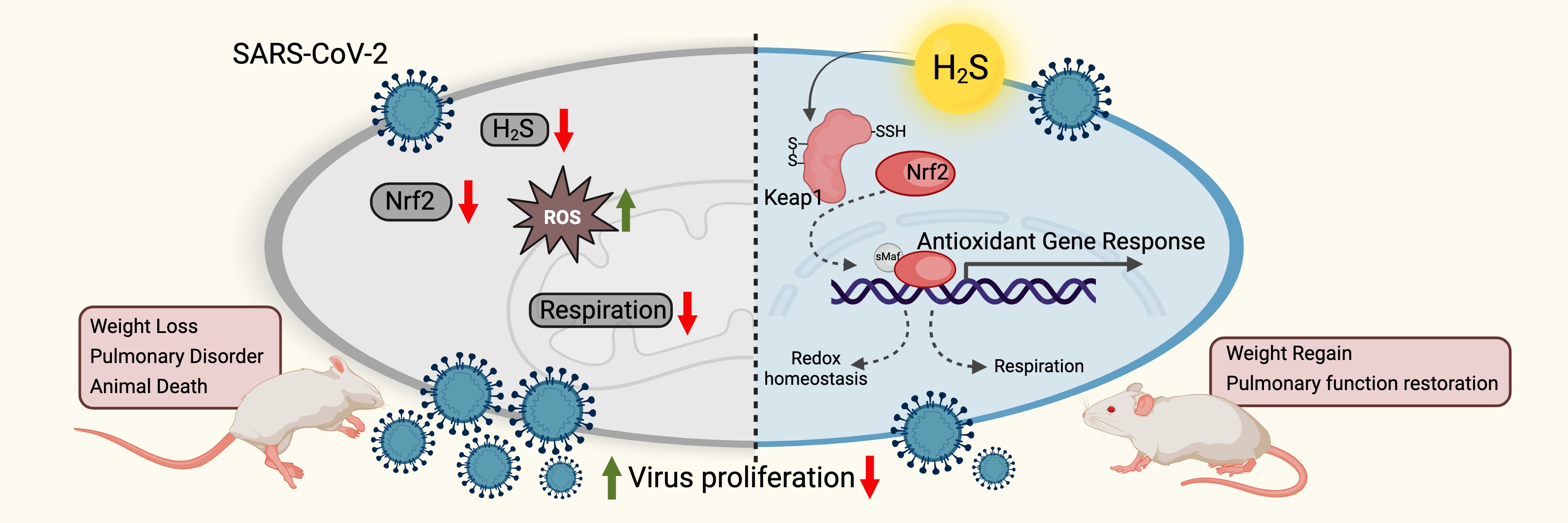Hydrogen sulphide gas restricts SARS-CoV-2 replication in host cells
– Anjaney J Pandey

Rising COVID-19 cases have raised the alarm once again. A new study from IISc delves deep into the relationship between SARS-CoV-2 entry and replication and hydrogen sulphide gas production (H2S) in host cells.
The study was led by Amit Singh at the Department of Microbiology and Cell Biology (MCB), IISc, in collaboration with Manjunath Joshi at the Manipal School of Life Sciences, MAHE. The scientists looked at how the virus disrupts H2S production and how H2S in turn can starve SARS-CoV-2. This gas, which is responsible for the foul odour produced by rotten eggs, is also produced at low concentration in human cells and plays a crucial role in orchestrating the function of mitochondria.
When SARS-CoV-2 enters our cells, it shuts down the expression of several enzymes that are needed for H2S production. In the absence of H2S, many downstream signalling pathways become affected, leading to mitochondrial oxidative stress. This sets the stage for the virus to start replicating and eventually killing the host cell. The team showed that silencing genes involved in producing H2S can lead to increased SARS-CoV-2 infection.
The researchers then asked whether adding an external source of H2S can protect the host cells. They found that using a small molecule H2S donor (GYY4137) reduced virus entry and replication in host cells. Next, they traced how GYY4137 was able to achieve this feat by measuring changes in gene expression patterns. They found that it induces several signalling pathways that are involved in host defence mechanisms. In addition, the H2S released from GYY4137 increased the expression of antioxidant genes regulated by a key transcription regulator called Nrf2.
The team then tested GYY4137 in mouse and hamster models. Mice infected with SARS-CoV-2 showed improved lung activity and reduced virus proliferation when treated with GYY4137, which was confirmed to be acting via the Nrf2-mediated pathway.
The researchers believe that H2S might play a similar role in infection by other RNA viruses like HIV and RSV. The findings also underscore the possibility of using a pharmacological H2S donor as a therapeutic agent to improve COVID-19 treatment.
REFERENCE:
Agrawal R, Pal VK, Suhas SK, Menon GJ, Singh IR, Malhotra N, Naren CS, Ganesh K, Rajmanu RS, Seshasayee ASN, Chandra N, Joshi MB, Singh A, Hydrogen sulfide (H2S) coordinates redox balance, carbon metabolism, and mitochondrial bioenergetics to suppress SARS-CoV-2 infection, PloS Pathogens (2025).
https://journals.plos.org/plospathogens/article?id=10.1371/journal.ppat.1013164
LAB WEBSITE:
https://cidr.iisc.ac.in/amit/




